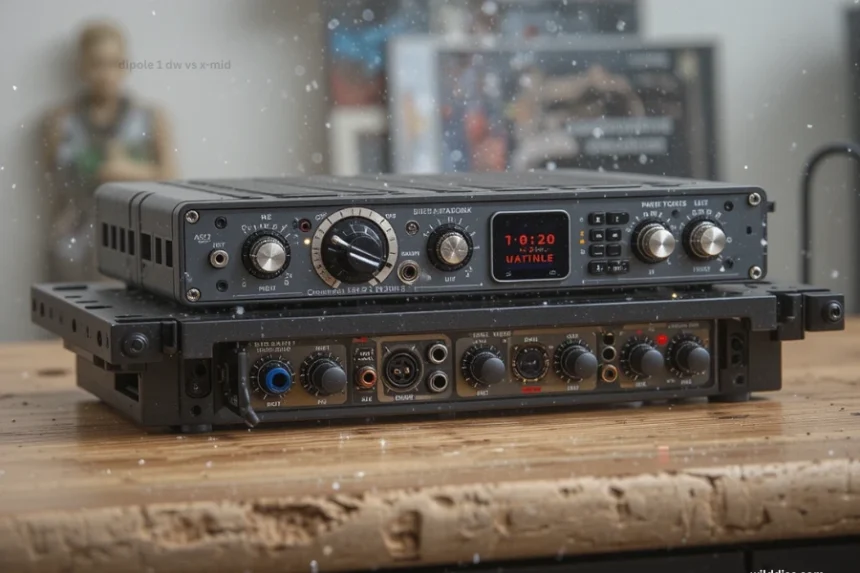In professional audio systems, selecting the right crossover is essential for optimal sound quality and system efficiency. The Ashly XR1001 Crossover and the Rane AC22 Crossover, which are both well-known for their dependability, accuracy in sound, and adaptability, are among the leading candidates. This article offers an in-depth comparison of Ashly XR1001 Crossover vs Rane AC22 Crossover, highlighting their features, differences, and helping you determine which one best suits your audio setup.
Overview of the Ashly XR1001 Crossover
The Ashly XR1001 is a high-performance active stereo crossover designed primarily for professional sound reinforcement, installation, and studio applications. Known for its clarity and flexibility, it provides precise filter controls and versatile configuration options suitable for complex audio systems.
Key Features of Ashly XR1001
Crossover Frequency Range: Supports a wide range of crossover points from 50Hz to 20kHz, adjustable in small increments for precise tuning.
Filter Types: Offers selectable Linkwitz-Riley, Butterworth, and Bessel filters, giving flexibility to match speaker characteristics.
Output Configuration: Provides stereo outputs with selectable low-pass and high-pass filters, as well as full-range mode.
Input and Output: Balanced XLR and 1/4″ TRS inputs and outputs for seamless integration with professional gear.
Additional Features: Front panel gain controls, phase switch, and bypass options for quick setup adjustments.
Build and Design: Rugged metal chassis designed for professional environments with clear, intuitive controls.
Overview of the Rane AC22 Crossover
The Rane AC22 is an analog 2-way stereo crossover regarded for its impeccable sound fidelity and durability. It is a popular choice among musicians, sound engineers, and installers who require high-quality audio separation at a competitive price point.
Key Features of Rane AC22
Crossover Frequency Range: Supports a wide adjustable crossover point from 50Hz to 3kHz, suitable for a variety of speaker combinations.
Filter Types: Provides Linkwitz-Riley filters, known for their phase coherence and flat frequency response.
Outputs: Stereo outputs with separate controls for low and high channels, ensuring flexible sound shaping.
Input Options: Balanced XLR and 1/4″ TRS inputs, accommodating professional gear.
Additional Features: Detented controls for precise adjustments, front-panel level controls, and indicator LEDs.
Build Quality: Heavy-duty metal construction with professional-grade components, designed for long-term reliability.
Comparing Technical Specifications and Features
Table
| Feature | Ashly XR1001 | Rane AC22 |
| Crossover Frequency Range | 50Hz – 20kHz | 50Hz – 3kHz |
| Filter Types | Linkwitz-Riley, Butterworth, Bessel | Linkwitz-Riley |
| Adjustable Slope | Yes (12 dB/oct, 24 dB/oct) | Yes (12 dB/oct, 24 dB/oct) |
| Inputs | XLR, 1/4″ TRS | XLR, 1/4″ TRS |
| Outputs | Stereo, XLR, 1/4″ TRS | Stereo, XLR, 1/4″ TRS |
| Additional Features | Phase switch, bypass, gain controls | Level controls, phase, LEDs |
| Construction Materials | Rugged metal chassis | Heavy-duty metal chassis |
| Power Requirements | Standard with external power supply | External power supply included |
Key Differences in Performance and Use
Frequency Range: The XR1001 has a broader crossover range (50Hz to 20kHz), making it suitable for both subwoofer and full-range system applications. The AC22’s limit at 3kHz makes it ideal primarily for two-way systems where high and low frequencies are separated.
Filter Selection: While both units feature Linkwitz-Riley filters known for phase coherence, the XR1001 offers additional filter types (Butterworth and Bessel), giving more flexibility for fine-tuning.
Control Precision: The AC22 features detented controls for exact adjustments, appealing to users who prefer tactile feedback. The XR1001 provides smooth potentiometers and more comprehensive control options.
Sound Quality and Application Suitability
The Ashly XR1001 is praised for its transparency and flexibility across a wide frequency spectrum, suitable for complex, multi-speaker setups, concert PA systems, and studio monitoring where detailed tuning is crucial. Its versatility in filter types and broad frequency range makes it adaptable to various audio configurations.
The Rane AC22, on the other hand, is renowned for its pure analog signal path and phase-coherent filtering, ensuring musical accuracy and transparency. Ideal for applications where sound integrity is critical, such as live performances, critical listening, and high-fidelity installations, it delivers very natural sound separation.
Which Crossover Fits Your Needs?
Deciding between Ashly XR1001 Crossover vs Rane AC22 Crossover depends on your specific requirements:
Choose Ashly XR1001 if:
- You need a wider crossover frequency range (50Hz–20kHz)
- You want the flexibility of different filter types
- Your setup involves complex multi-way systems requiring precise tuning
- You give priority to sophisticated features like phase switching and bypass.
Choose Rane AC22 if:
- You prefer a straightforward, high-fidelity analog crossover
- Your work involves standard 2-way systems requiring reliable separation
- You value simplicity, durability, and excellent musical transparency
- Your primary focus is live sound or critical listening environments
Final Thoughts
Both the Ashly XR1001 and Rane AC22 are excellent choices for professional and high-quality sound reinforcement. With its wide frequency range and great versatility, the XR1001 is ideal for studio use and sophisticated systems. The AC22, on the other hand, fits in well with live sound and critical listening applications because of its unparalleled dependability, natural sound quality, and simplicity.
Ultimately, your selection should reflect your specific needs, budget, and system complexity. If you require extensive tuning options and flexibility, the Ashly XR1001 is a powerful tool. If you seek straightforward, reliable performance with a focus on audio fidelity, the Rane AC22 stands out as a dependable choice.



